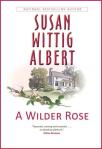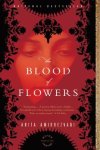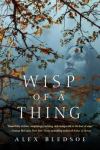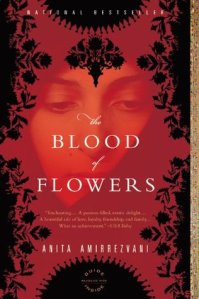 Top Ten Tuesday is an original meme hosted by The Broke and the Bookish. Head over there to see more lists like this one!
Top Ten Tuesday is an original meme hosted by The Broke and the Bookish. Head over there to see more lists like this one!
My list, I’m afraid, is in no particular order. I loved all of these books like children – individually and with no favorites.
 How to Run with a Naked Werewolf by Molly Harper (2013)
How to Run with a Naked Werewolf by Molly Harper (2013)
Molly Harper is definitely one of my favorite light-reading authors, mostly for her deliciously snarky humor. This Alaskan werewolf romance is one of her best offerings yet.
If you’ve never read alternate history fantasy, this is a great place to start. It’s set in a post WWII Britain where “Peace In Our Time” really lasted… at a price. Now the government is friendly with the victorious German Nazis, and Jews, homosexuals, and other “undesirables” fear for their lives. Farthing is the first book in a loosely related trilogy.
 The Rithmatist by Brandon Sanderson (2013)
The Rithmatist by Brandon Sanderson (2013)
Although such comparisons are usually shallow, unfair, or both, I’m going to describe this to you like I did to my girlfriends with reading children: Harry Potter. With magic math.
 The Wicked Girls by Alex Marwood (2008)
The Wicked Girls by Alex Marwood (2008)
This is the “not my usual” pick on this list – I don’t normally read crime. This one really worked for me, though – strong characterization, an unusual setting, and a mystery I couldn’t figure out. I originally got the recommendation from A Work In Progress, and so her review is linked above.
 Take Three Tenses: A Fugue in Time by Rumer Godden (1945)
Take Three Tenses: A Fugue in Time by Rumer Godden (1945)
This short, somewhat stylized novel explores the life of a house over 100 years. Although it was written in 1945, I also found it to be very modern in the way it examined women’s roles in society.
 A Wilder Rose by Susan Wittig Albert (2013)
A Wilder Rose by Susan Wittig Albert (2013)
What was the relationship between Laura Ingalls Wilder and her author daughter, Rose? This book is a fictionalized account of the years after Rose returned from Albania and settled down (or didn’t) to working with her mother on the Little House books. Albert does an amazing job of capturing Rose’s voice and filling in some missing years in these fascinating womens’ lives.
 The Blood of Flowers by Anita Amirezzvani (2007)
The Blood of Flowers by Anita Amirezzvani (2007)
This unusual piece of historical fiction is about a Persian village girl who dreams of working as a rugmaker in the big city. The story line of finding your place in a world that is not always friendly to women was so true that it resonated with me as a current-day woman engineer in heavy industry. There’s also some light romance and intrigue, and the setting is absolutely wonderful: richly and lovingly detailed seventeenth-century Persia.
 My Salinger Year Joanna Rakoff (2014)
My Salinger Year Joanna Rakoff (2014)
This memoir successfully opens a window into another life & another world: in this case, mid-90’s literary New York. Like most window-gazing, this book will satisfy your inner book-nerd voyeur.
.
Wisp of a Thing by Alex Bledsoe (2014)
Although you could easily read it as a standalone book, Wisp of a Thing is the second installment in Bledsoe’s rural fantasy series about the Tufa, a mysterious group of people — or ?? — living in the hills in Tennesee. The books are infused with music and Appalachia and magic, and are the most wonderful antidote to too much urban fantasy.
 Enchantress from the Stars by Sylvia Engdahl (1970)
Enchantress from the Stars by Sylvia Engdahl (1970)
Sylvia Engdahl gives us both fantasy and science fiction in this classic YA novel: a story of three brothers who try to slay a dragon with the help of an enchantress and a sorcerer, and science fiction about three anthropologists from an advanced race of humans that travel to a less developed planet to help the locals resist colonization.




